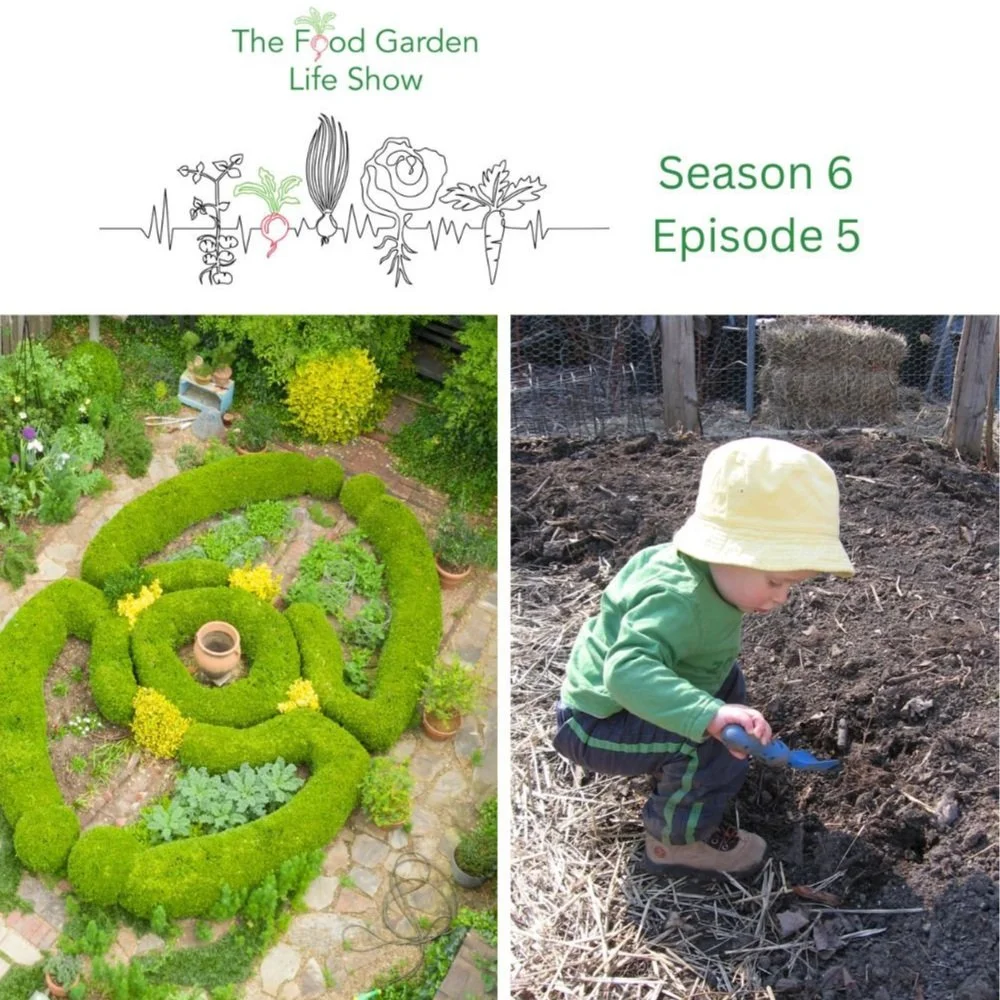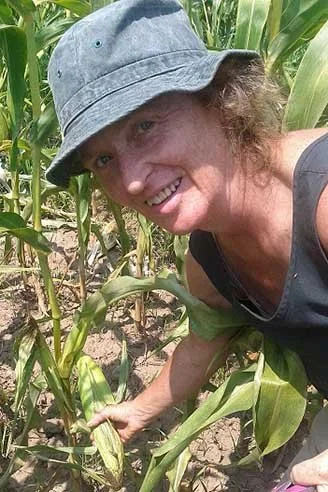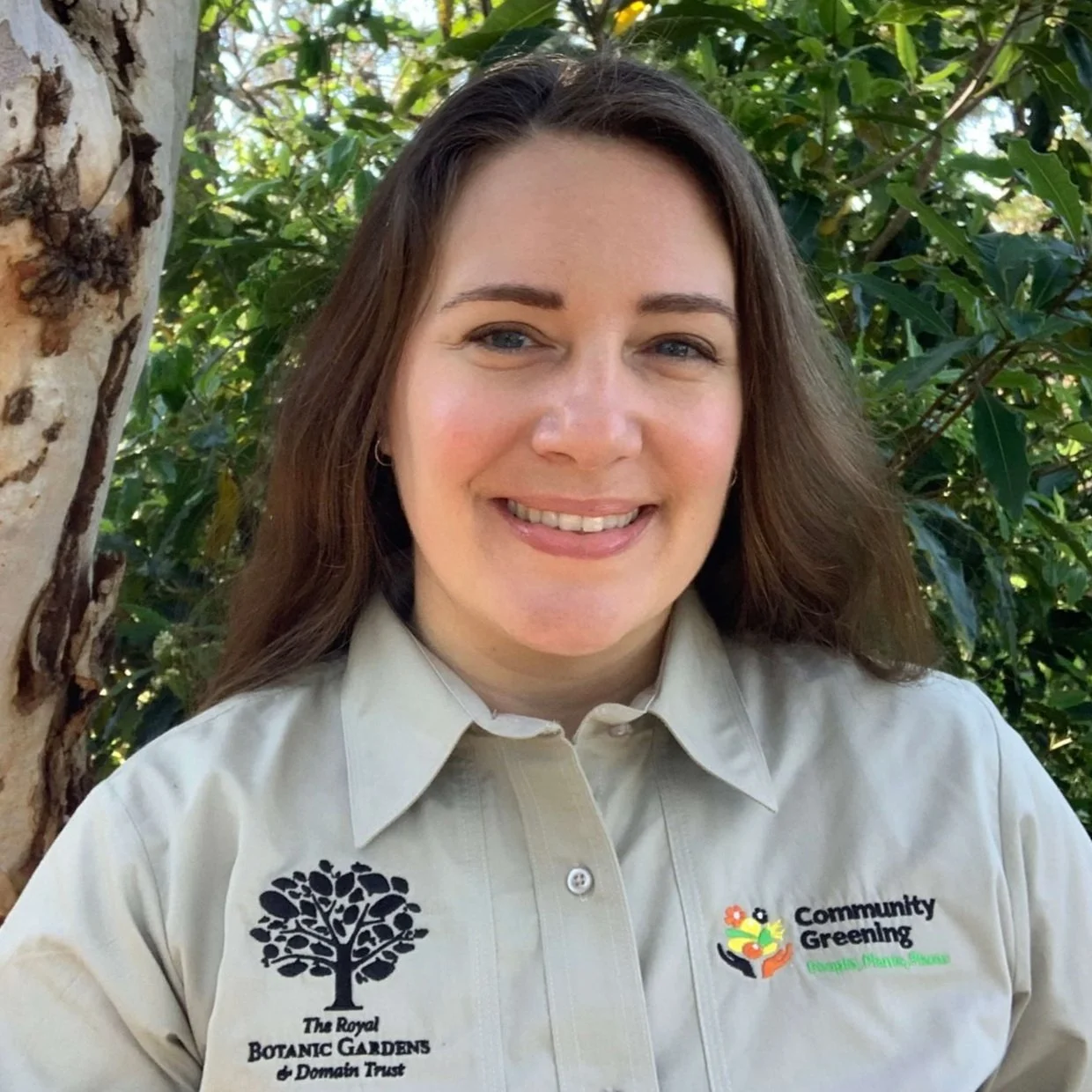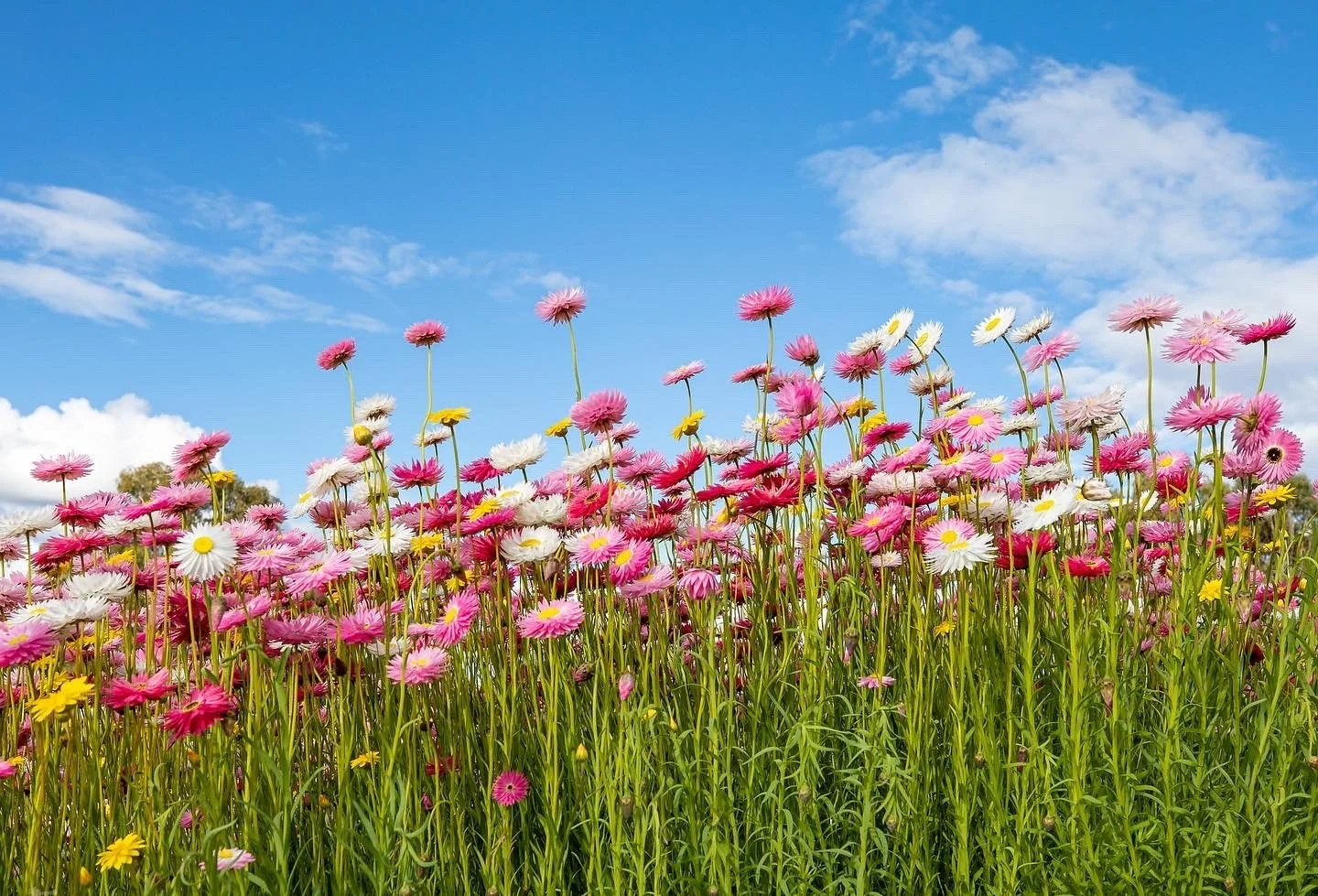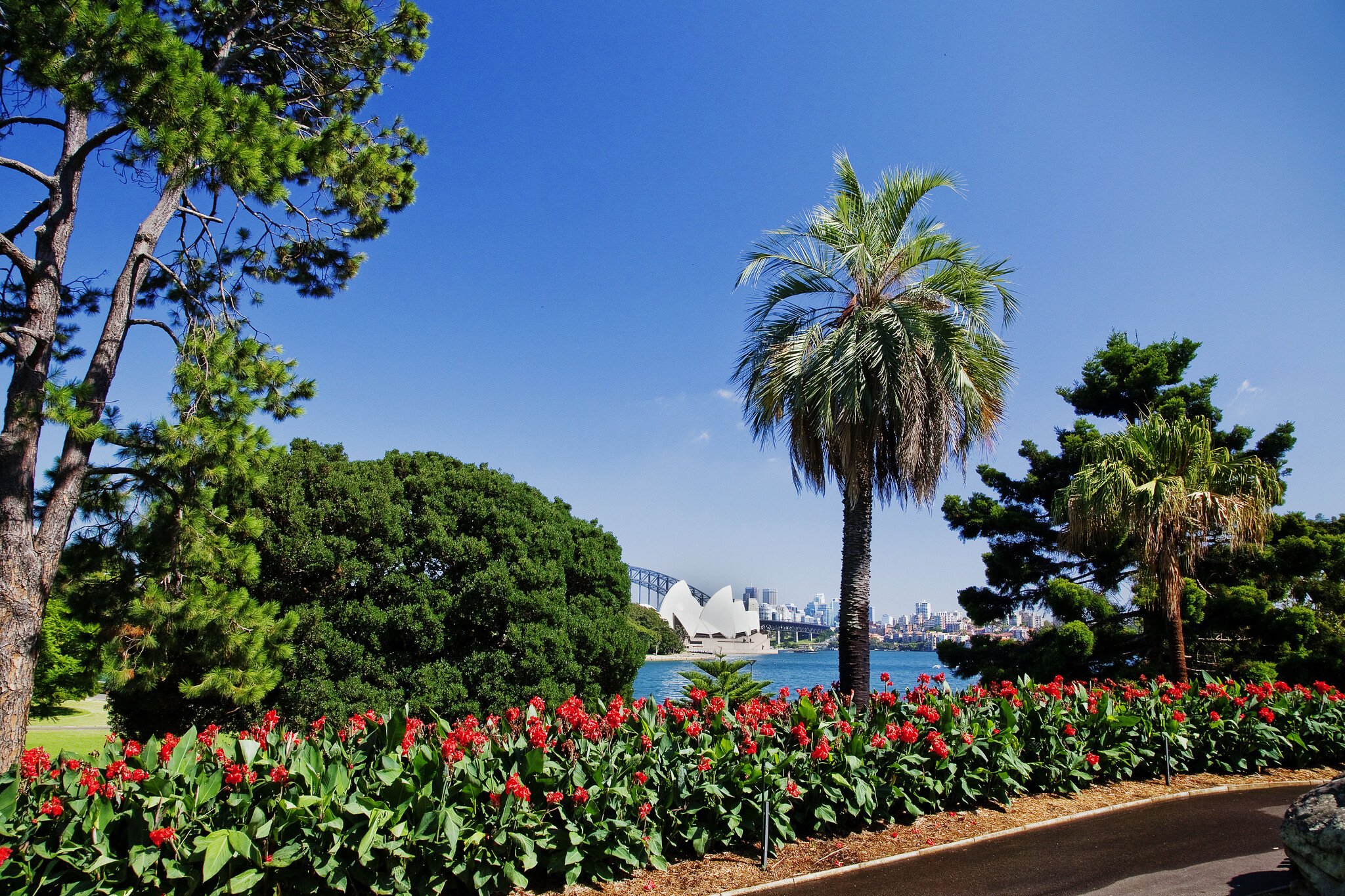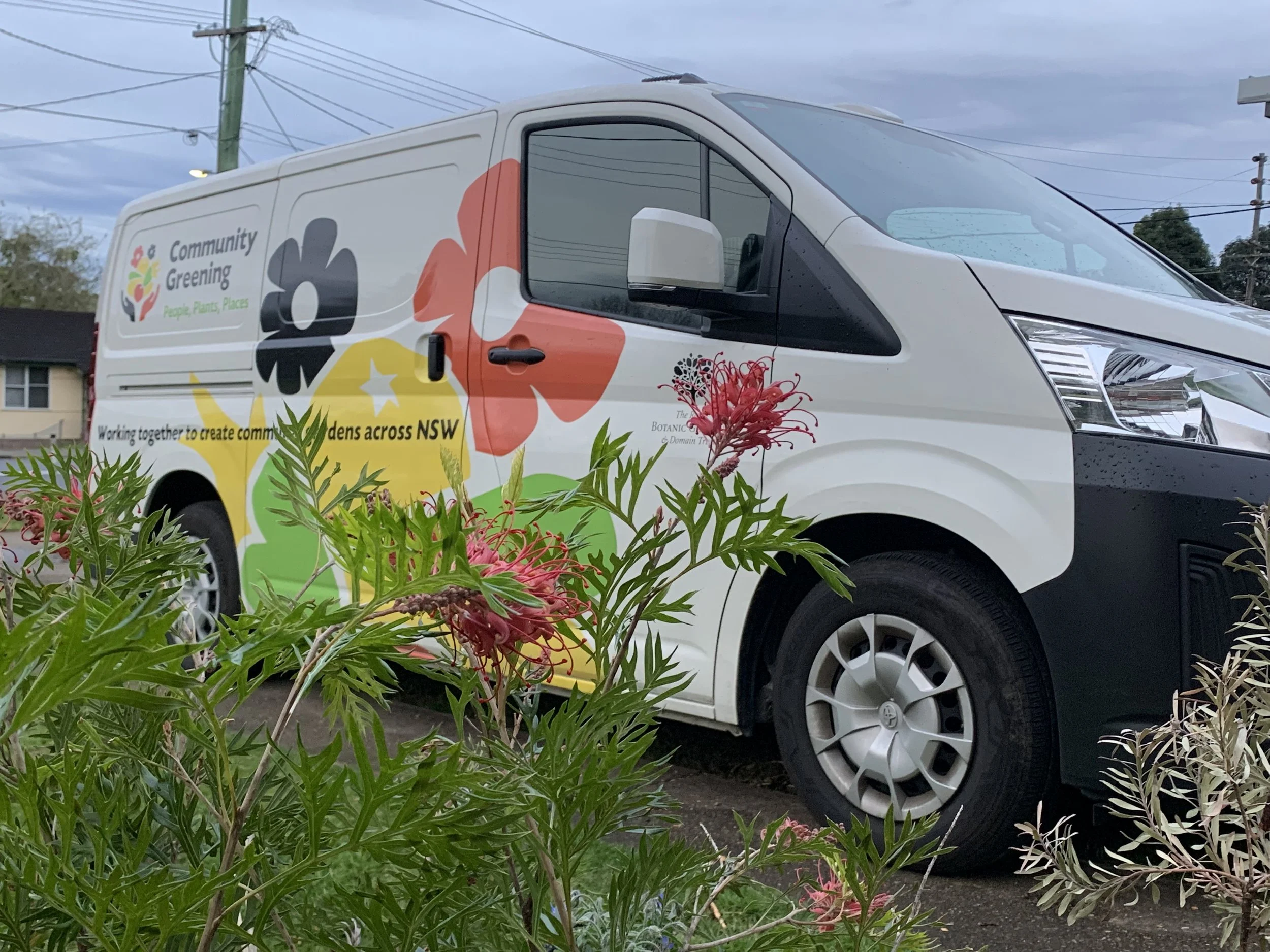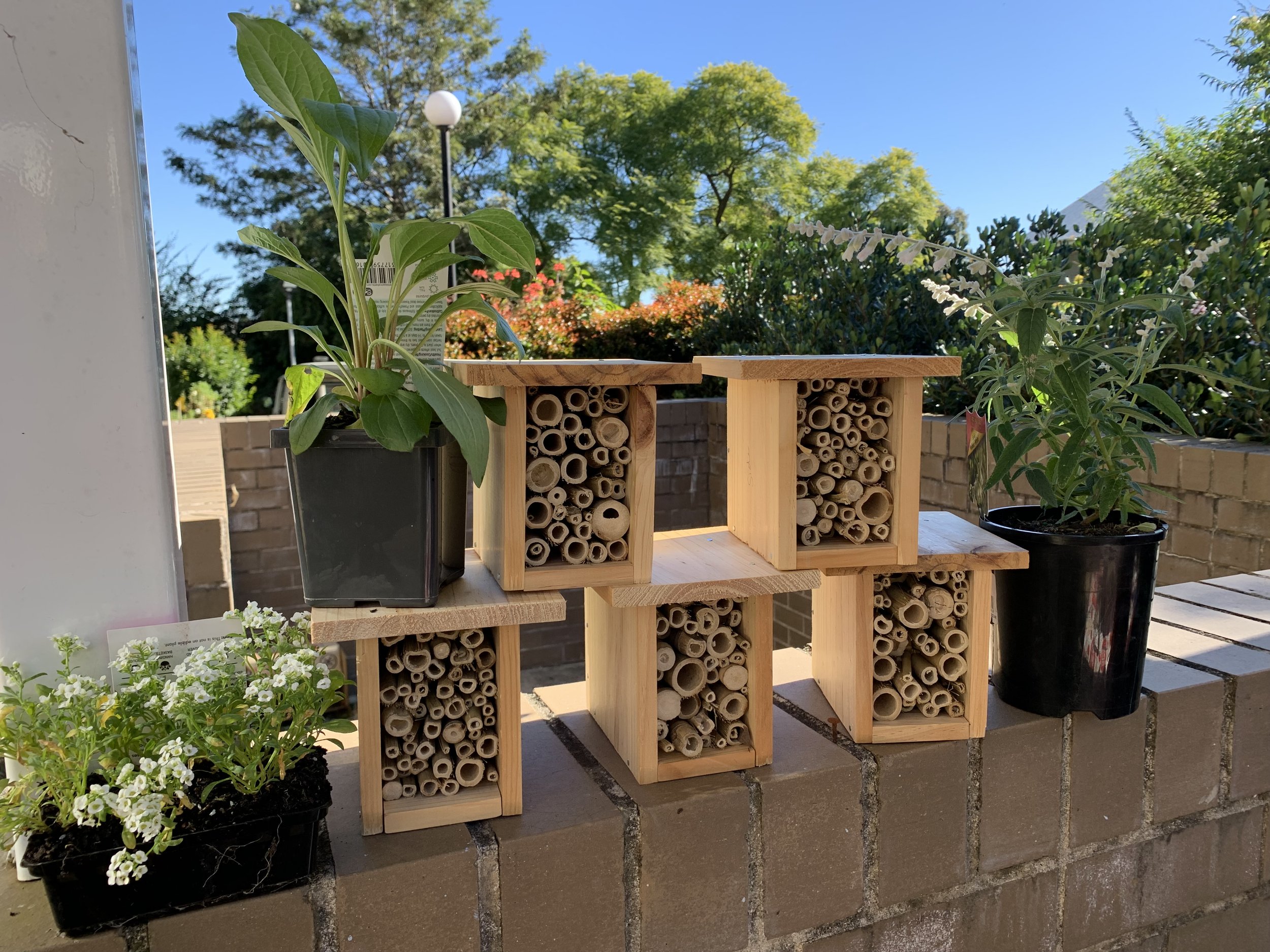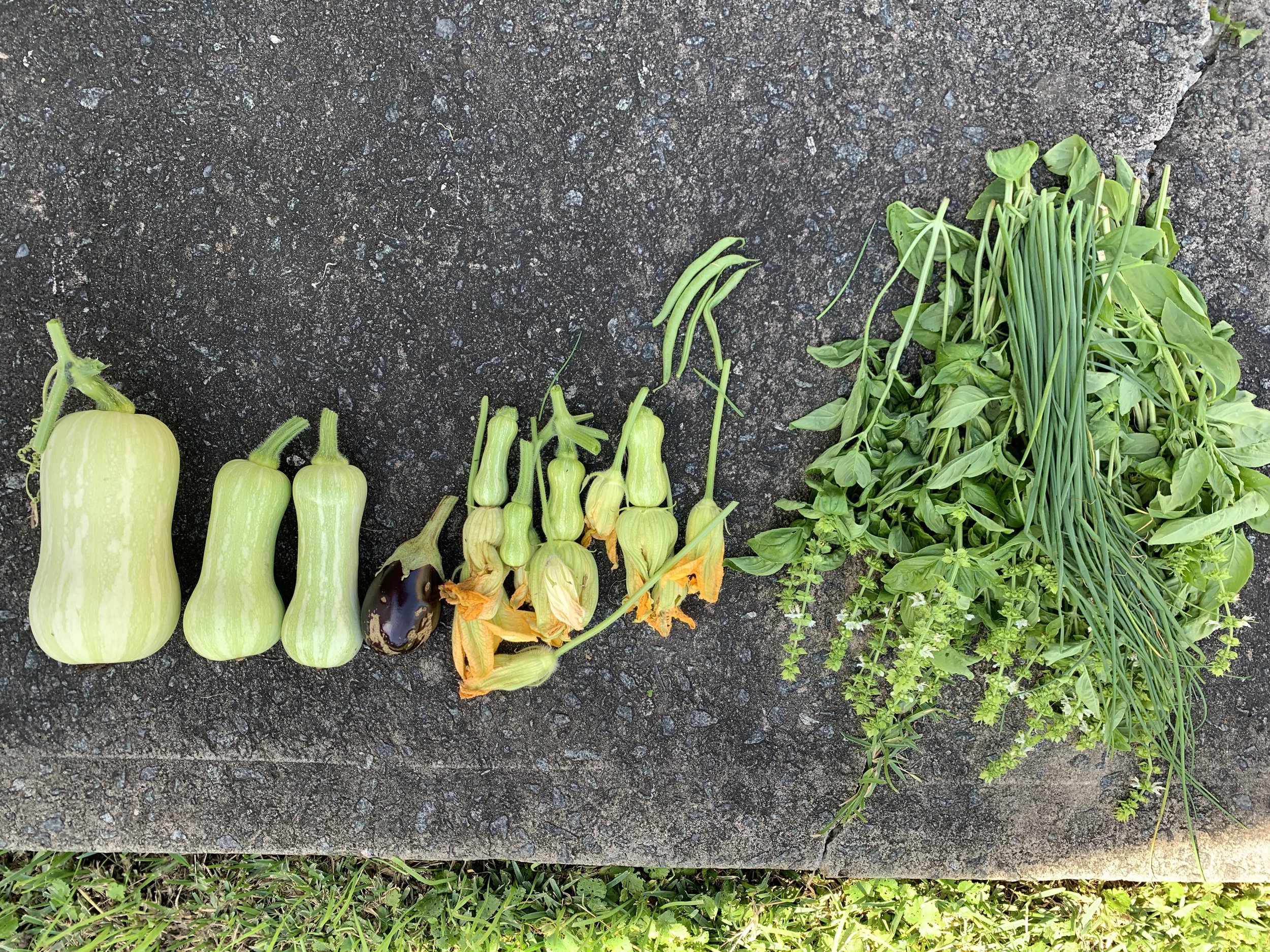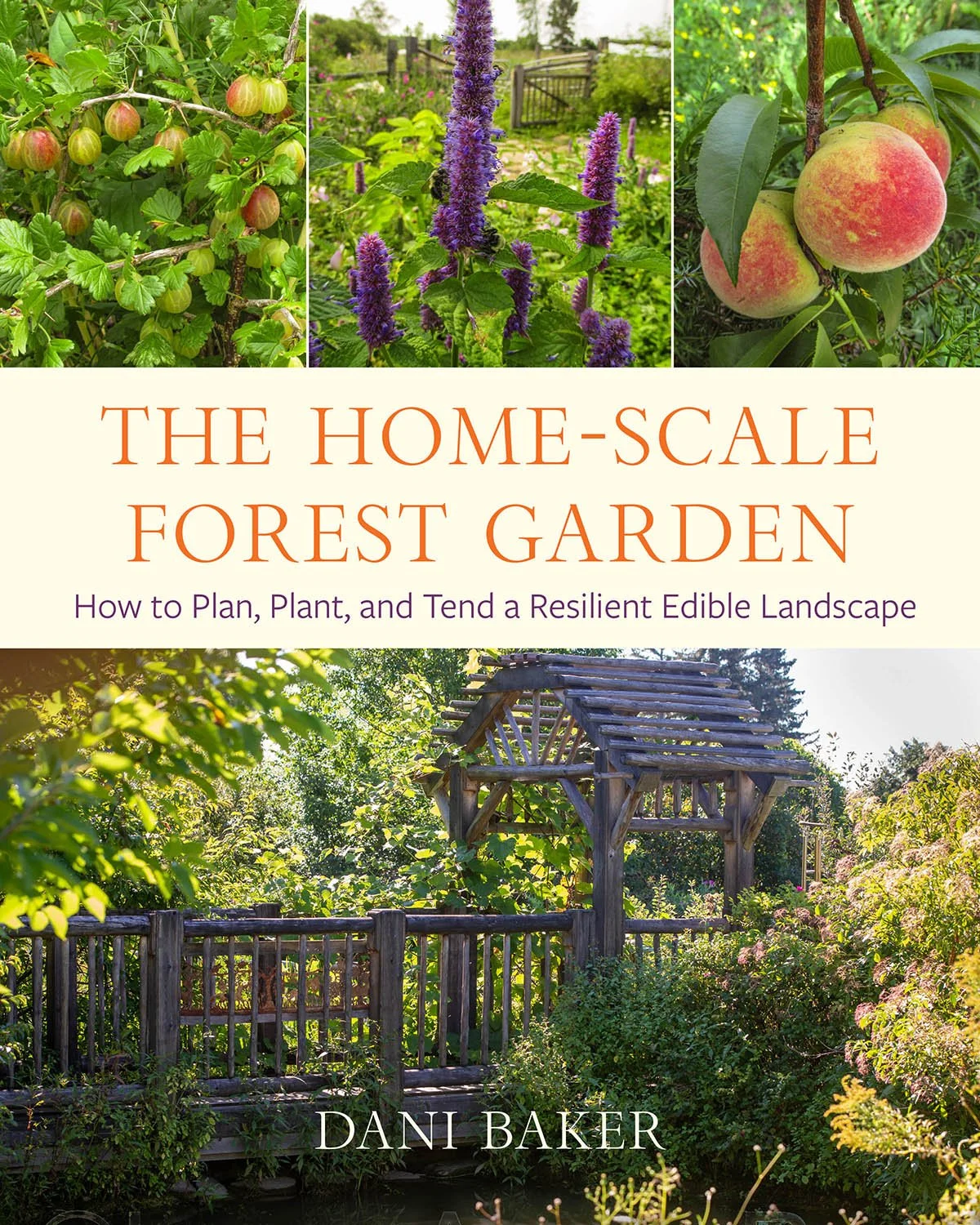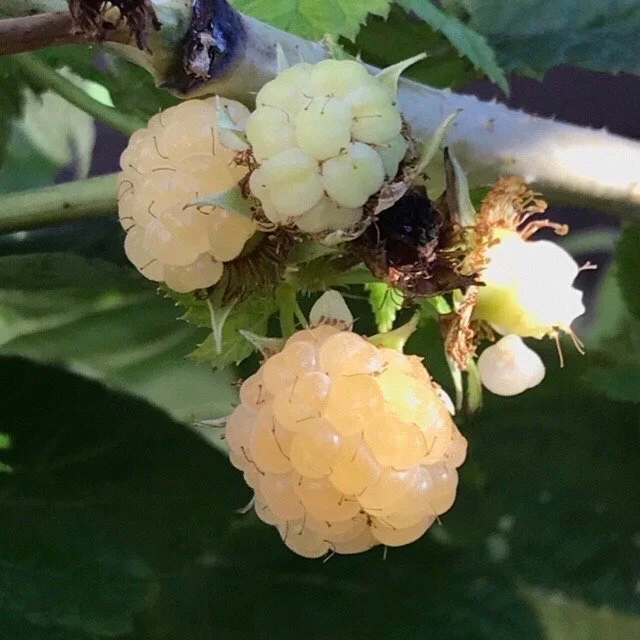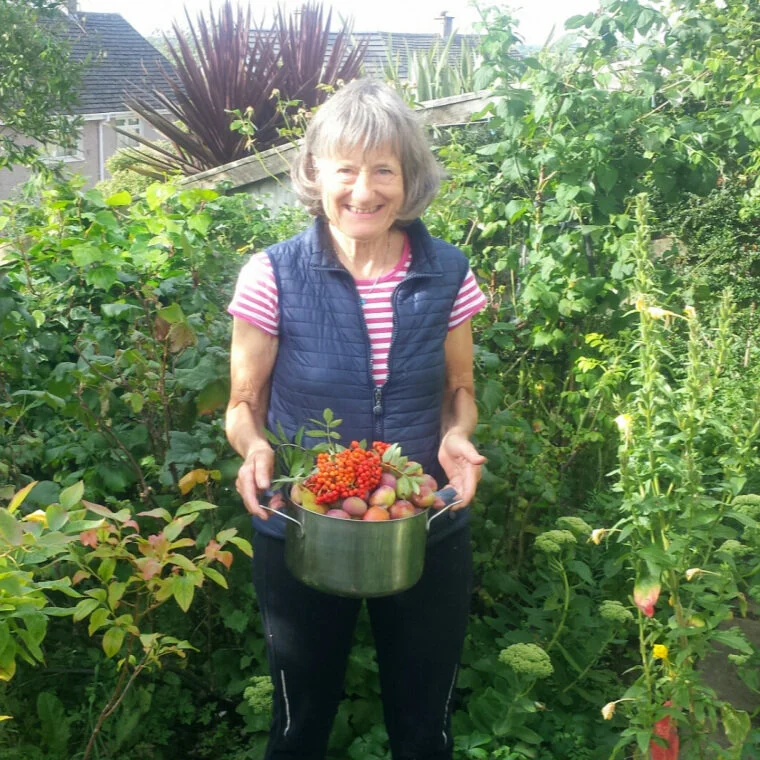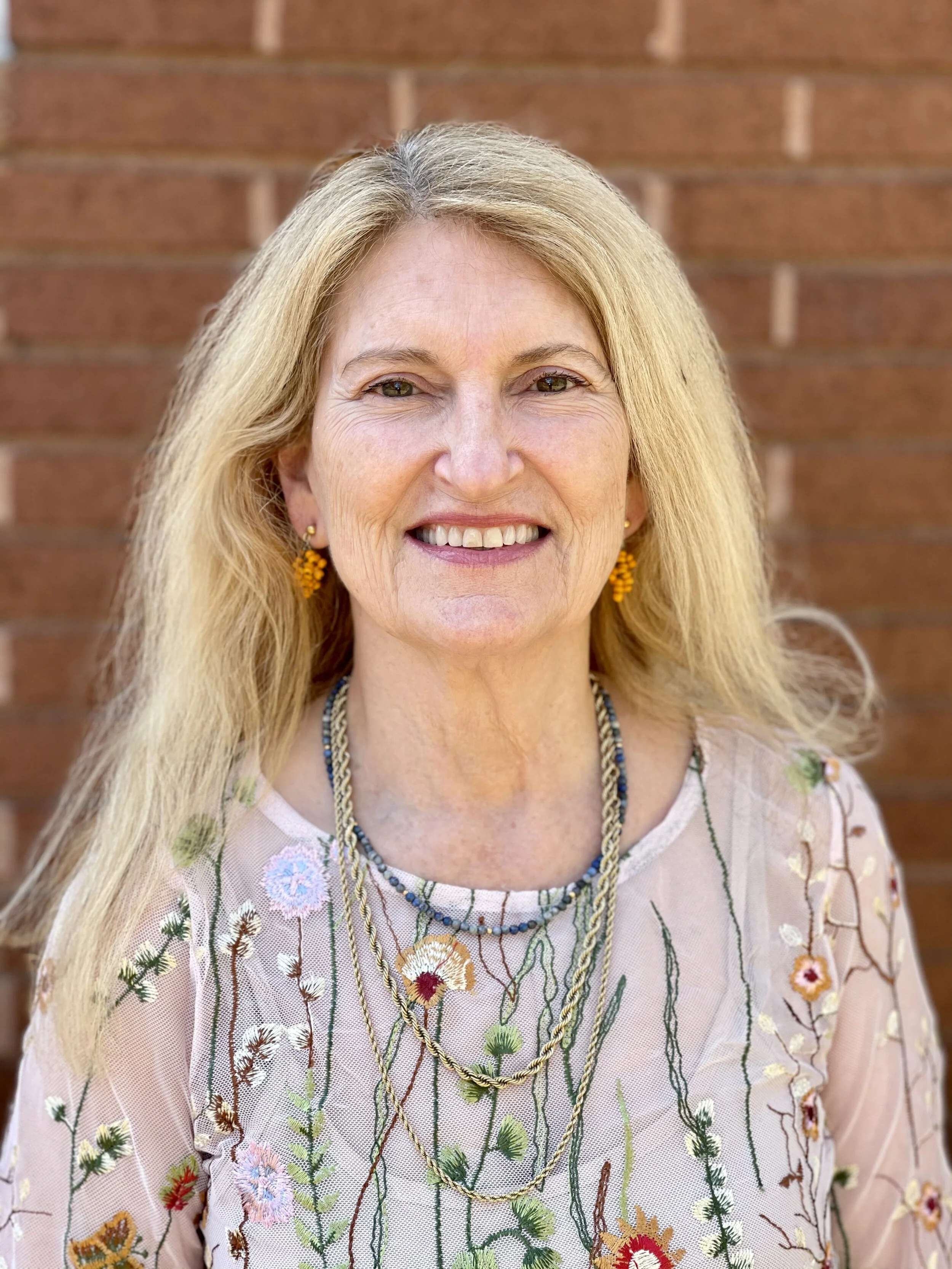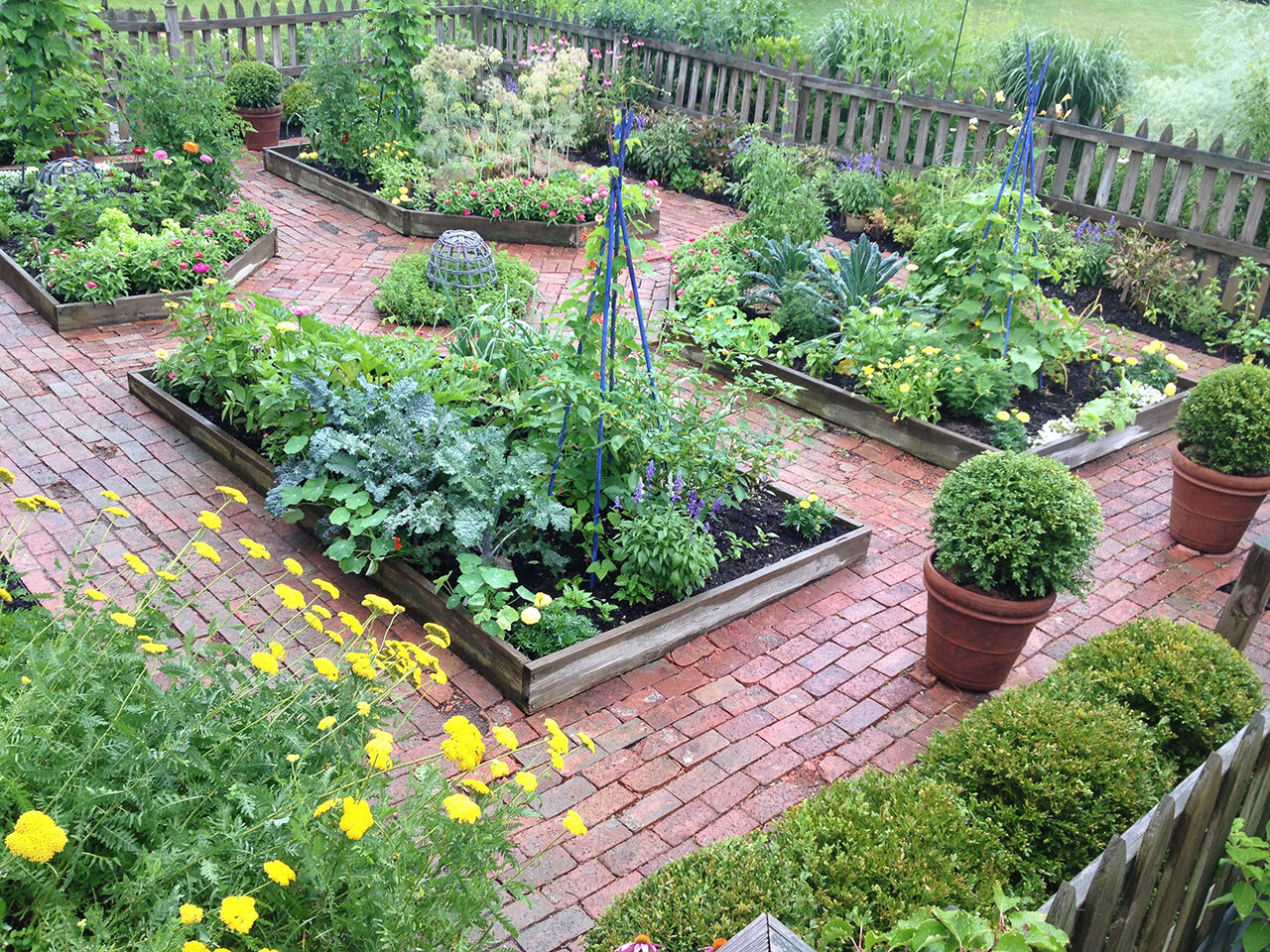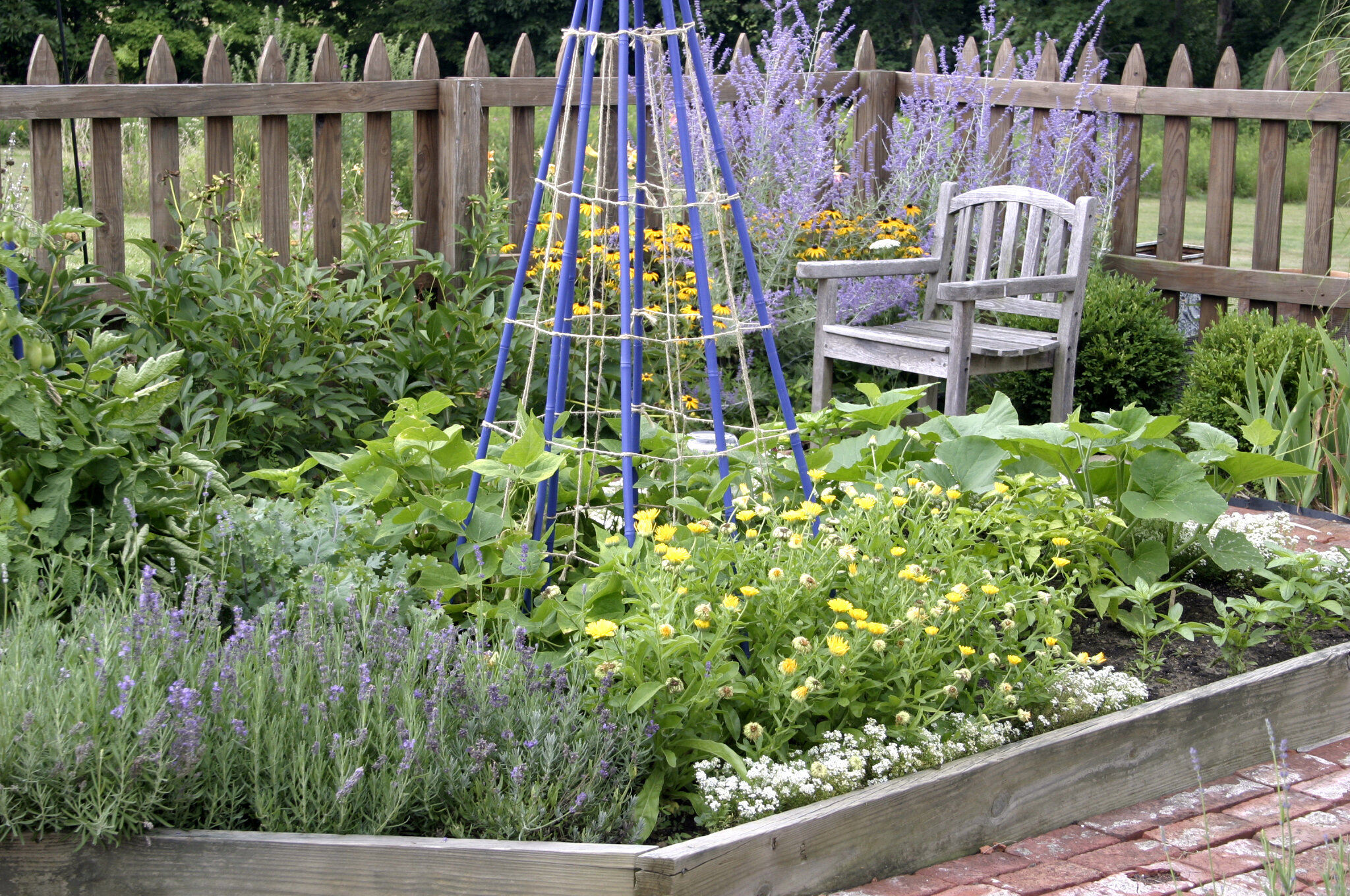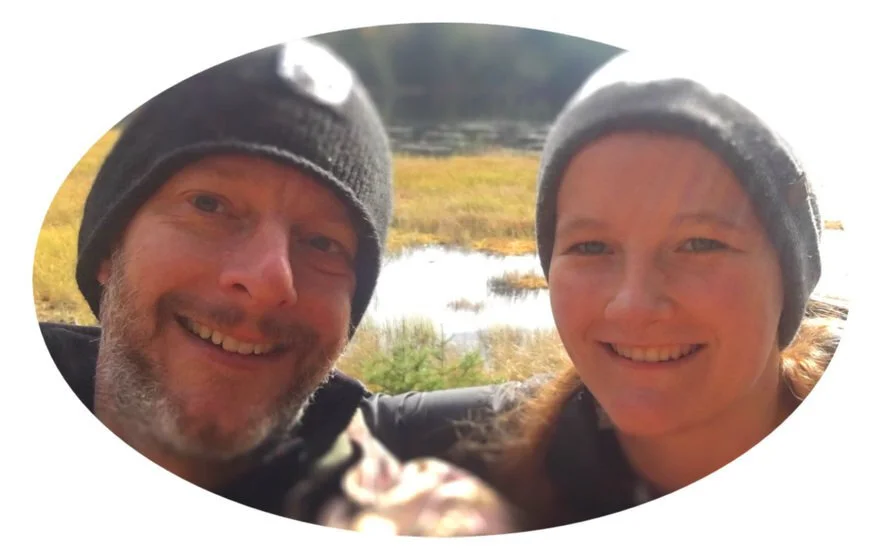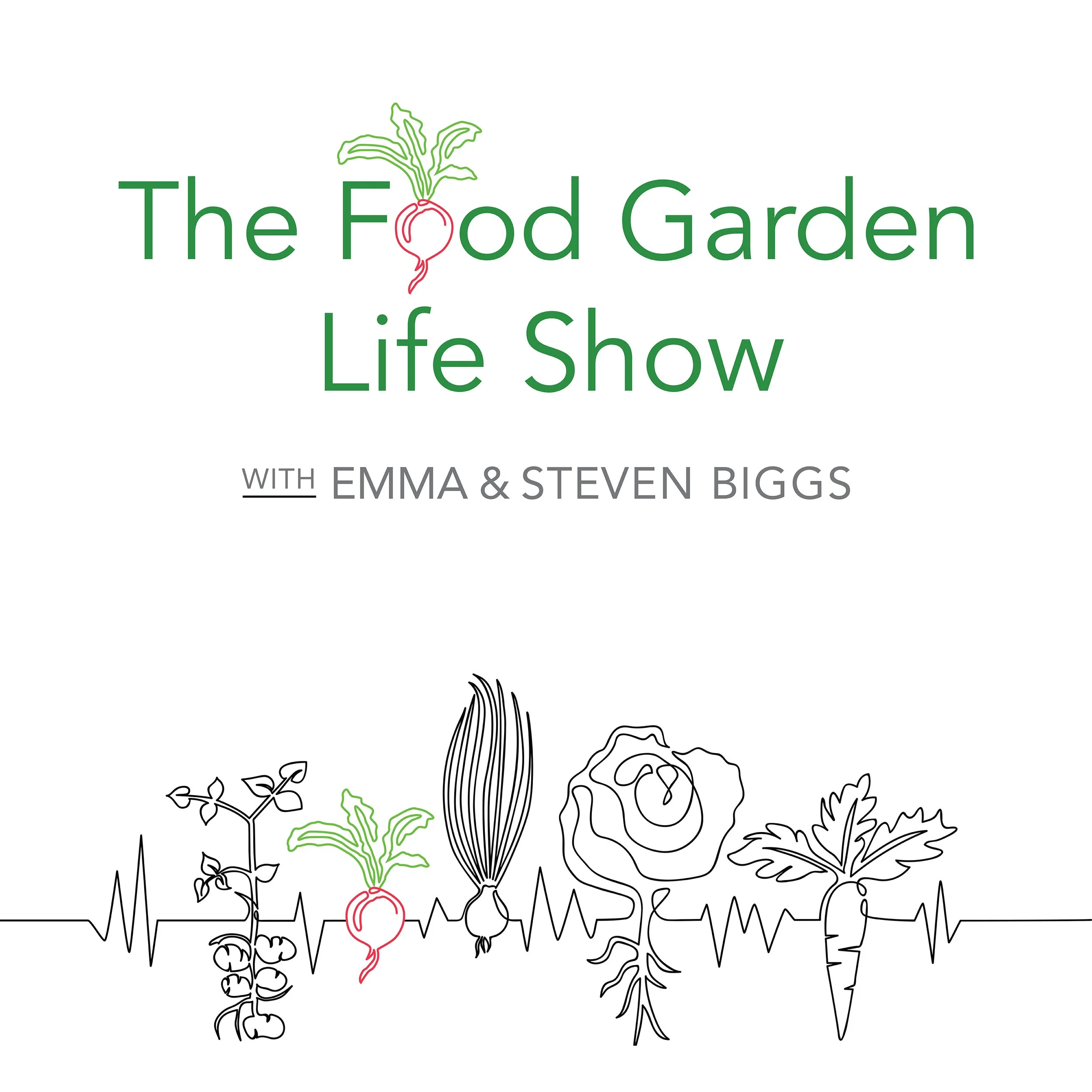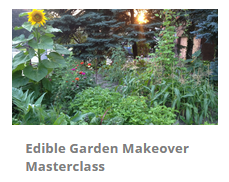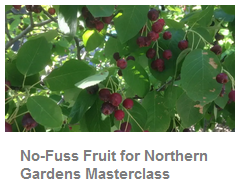Edible Garden Artistry with Potager Gardens + School Gardens that Survive Summer
Garden designer Linda Vater talks about how to make a potager garden. Sunday Harrison from Green Thumbs Growing Kids talks about setting up school gardens for summertime success.
Potager Gardens bring Together Elegant & Edible
Oklahoma garden designer Linda Vater loves to create elegant edible gardens. Her work is inspired by the tradition of the potager garden.
We talk about:
Potager gardens
Making ornamental and elegant edible gardens
Design elements such as enclosure, colour, and texture
How to design your own potager-style garden

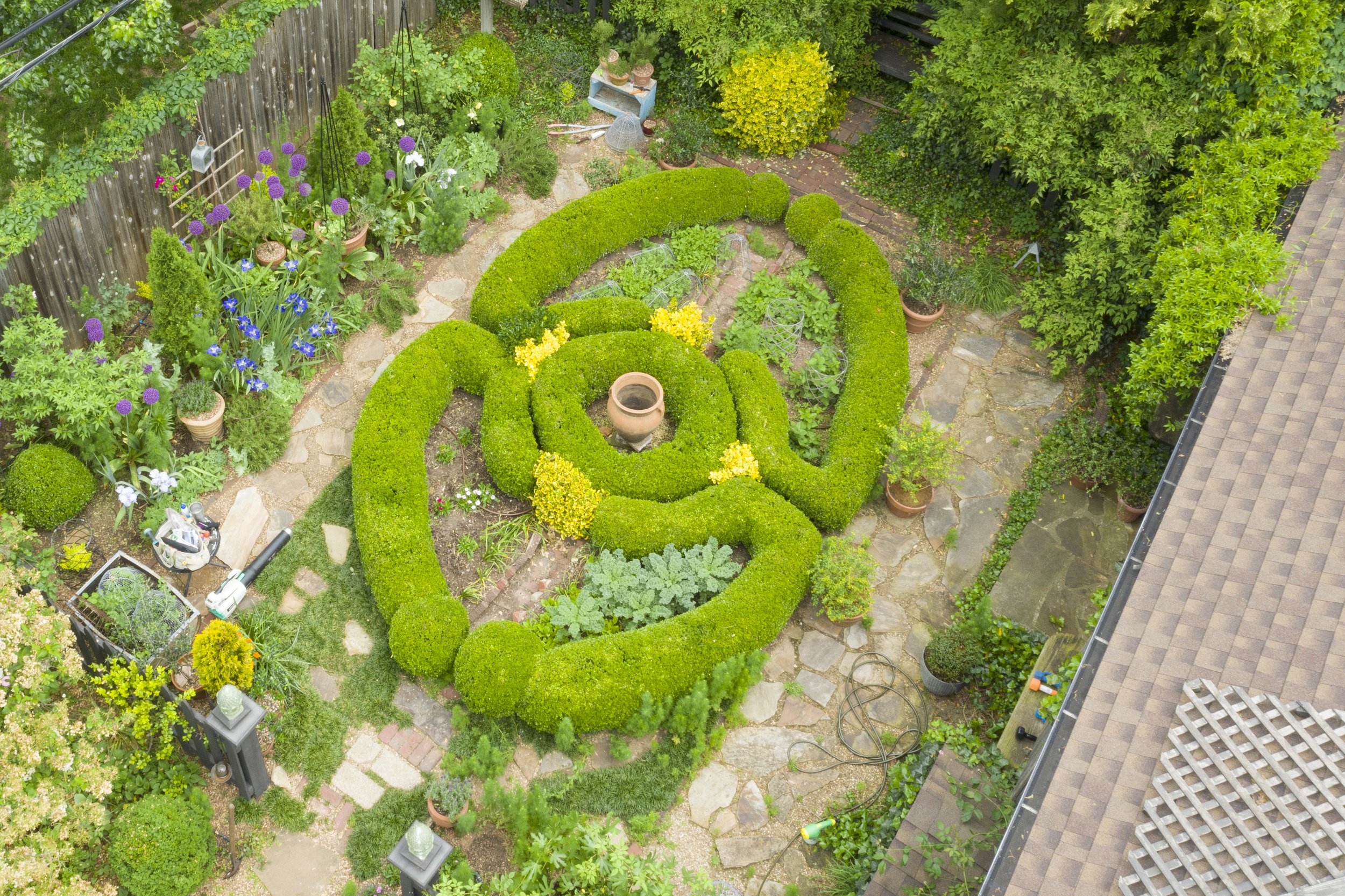
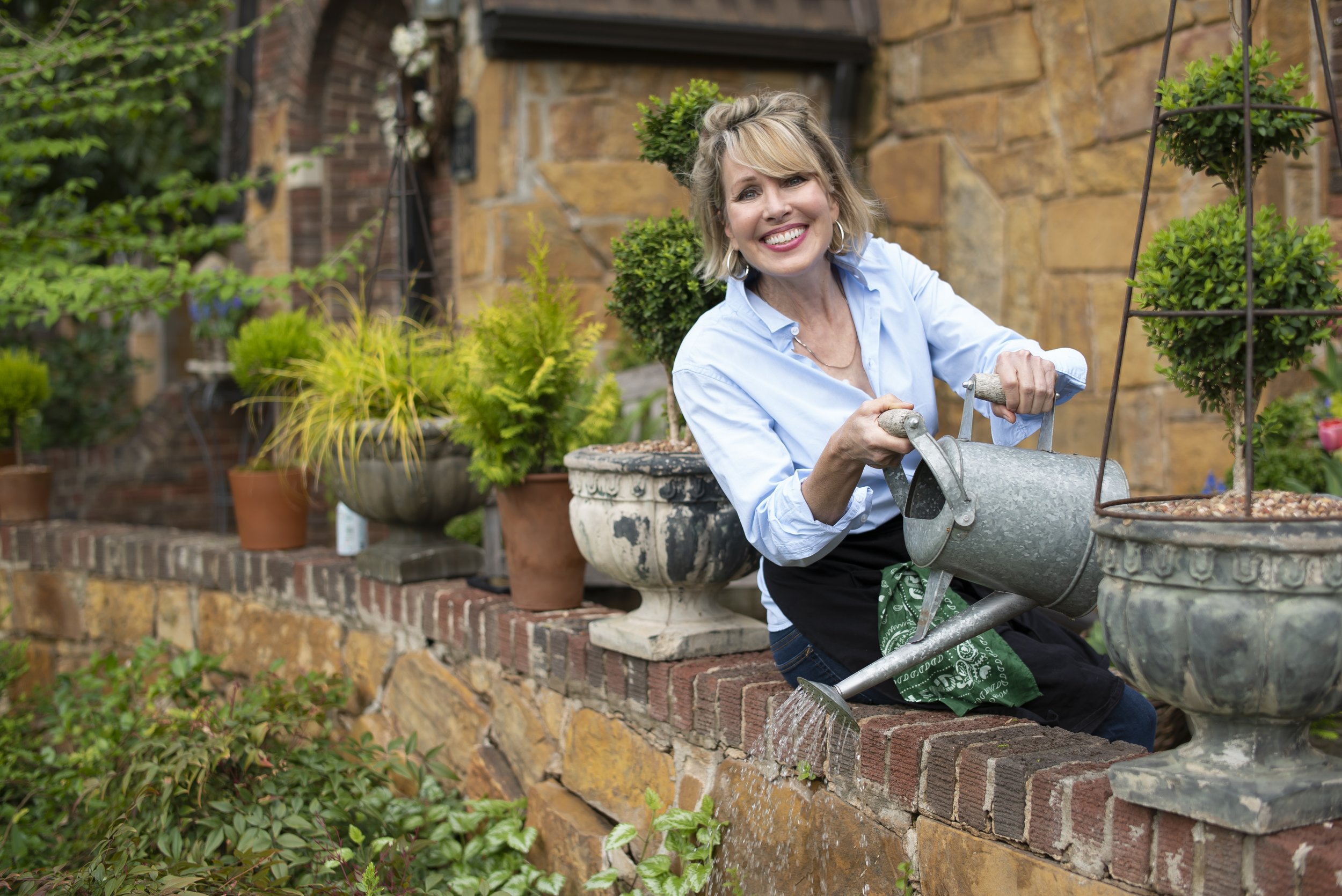
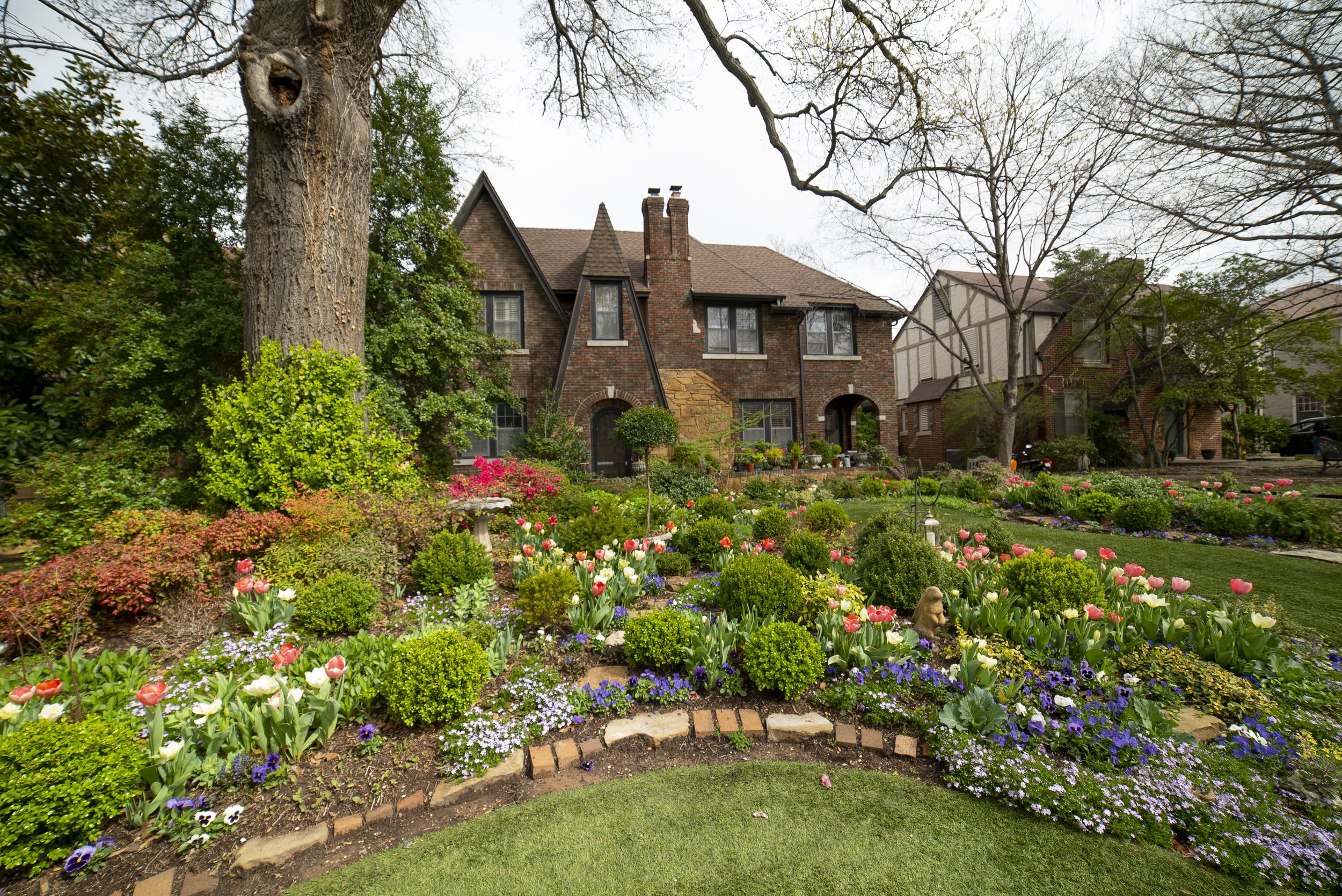
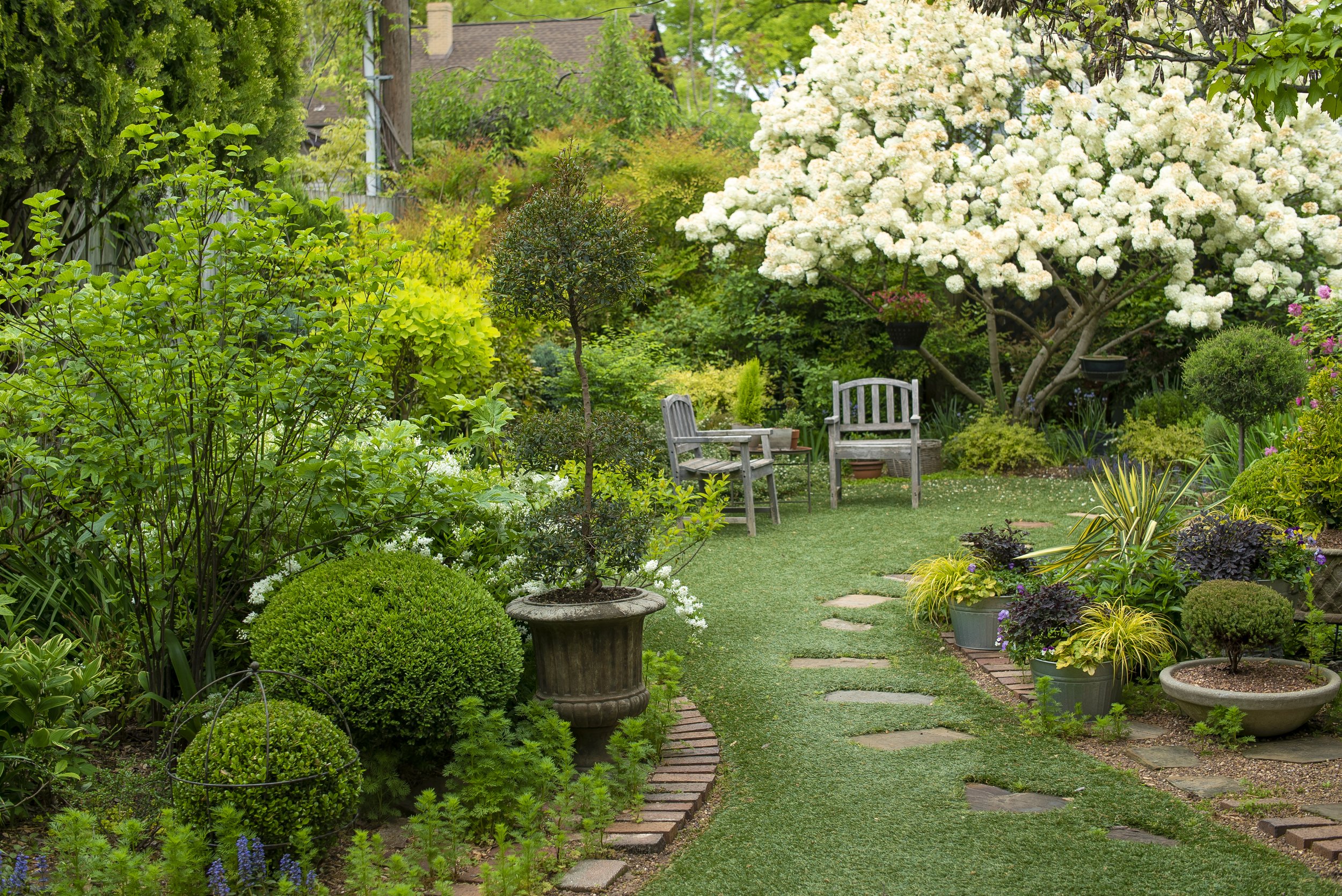
School Gardens That Thrive over Summer
In the second part of the show we catch up with Sunday Harrison from Green Thumbs Growing Kids in Toronto. We're big fans of this non-profit that brings gardening to school kids and communities in downtown neighbourhoods.
We find out more about their model, which solves a common challenge of school gardens: Summer.
We talk about:
Why working with a cluster of schools helps with summer care
Summer community involvement
A project that gets kids growing trees from seed
Want More on Landscape Design with Edibles?
Here’s an article to get you started with edible perennials, a great way to start your ornamental edible garden.
Here are a couple of interviews to give you ideas for landscape design using edible plants.
Attractive Food Gardens, Scrappy Plants, and Outreach
Adina Oosterwijk, the Community Greening Officer at the Royal Botanic Garden in Sydney, Australia talks about community outreach and home food gardens that are productive and aesthetically pleasing.
Connecting Gardens, People, and Food
Adina Oosterwijk, the Community Greening Officer at the Royal Botanic Garden in Sydney, Australia talks about community outreach and making attractive home food gardens.
We chat with Adina Oosterwijk, the Community Greening Officer at the Royal Botanic Garden in Sydney, Australia.
We talk about:
The Royal Botanic Garden in Sydney, which has three different sites that each have different growing conditions and plant collections
Home food gardens that are productive and aesthetically pleasing
Garden outreach to vulnerable communities
Scrappy plants for tough growing conditions
A tomato festival
Home-Scale Forest Garden
Dani Baker, author of The Home-Scale Forest Garden, talks about planning, planting, and caring for a forest garden.
Making an Edible Landscape with a Forest Garden
Dani Baker, author of The Home-Scale Forest Garden, talks about planning, planting, and caring for a forest garden.
We chat with author and market gardener Dani Baker about forest gardening.
Baker has created a forest garden on her USDA Zone 4 farm. She shares her tips for making a forest garden, whether it’s an acre or just a few square feet.
We talk about:
Permaculture principles
Creating microclimates
Grouping plants in layers
Understanding your space
Matching plants to conditions
What you can do at this time of year to get started
Her new book is The Home-Scale Forest Garden: How to Plan, Plant, and Tend a Resilient Edible Landscape.
Scenes from Dani Baker’s Forest Garden
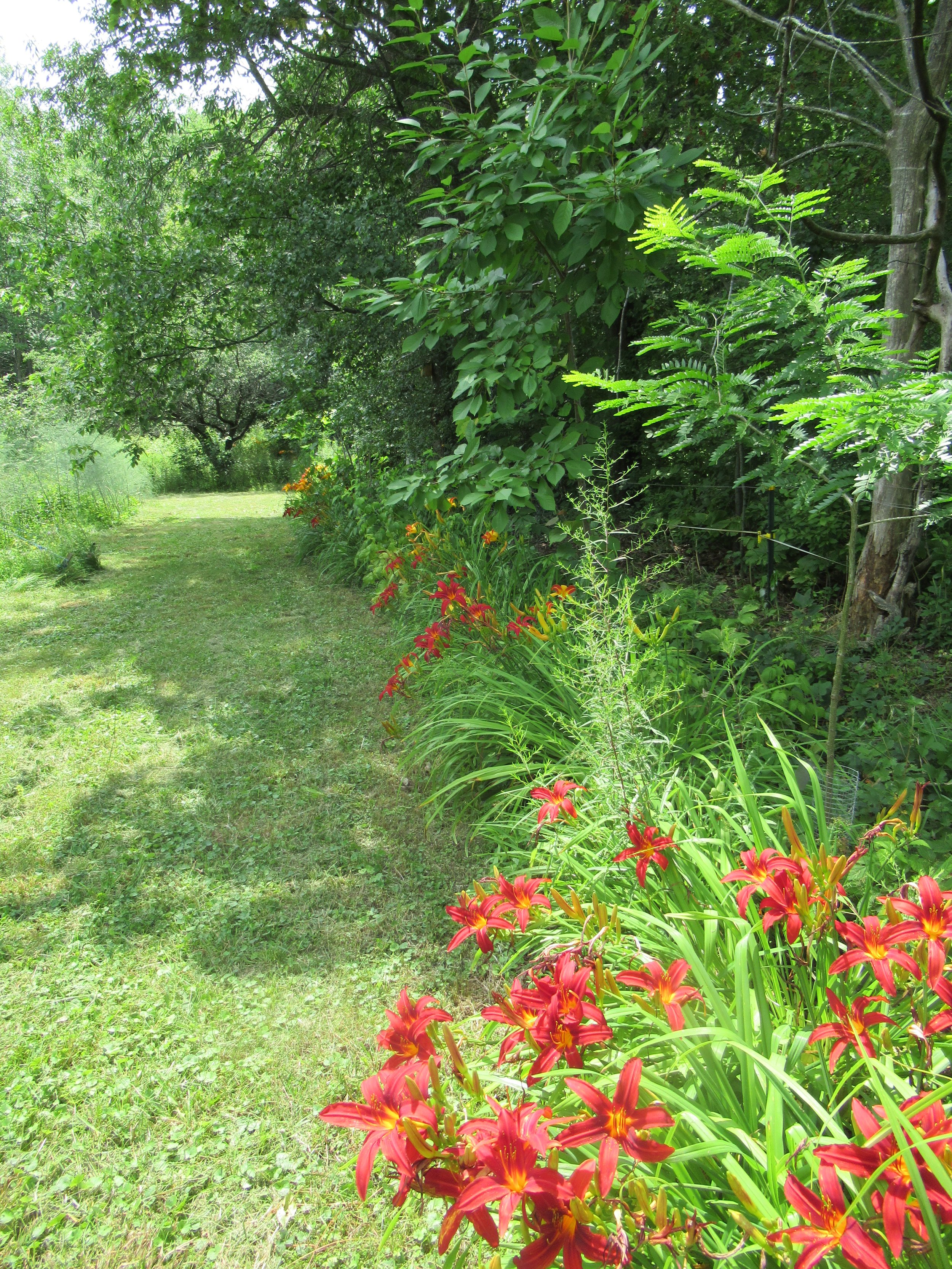

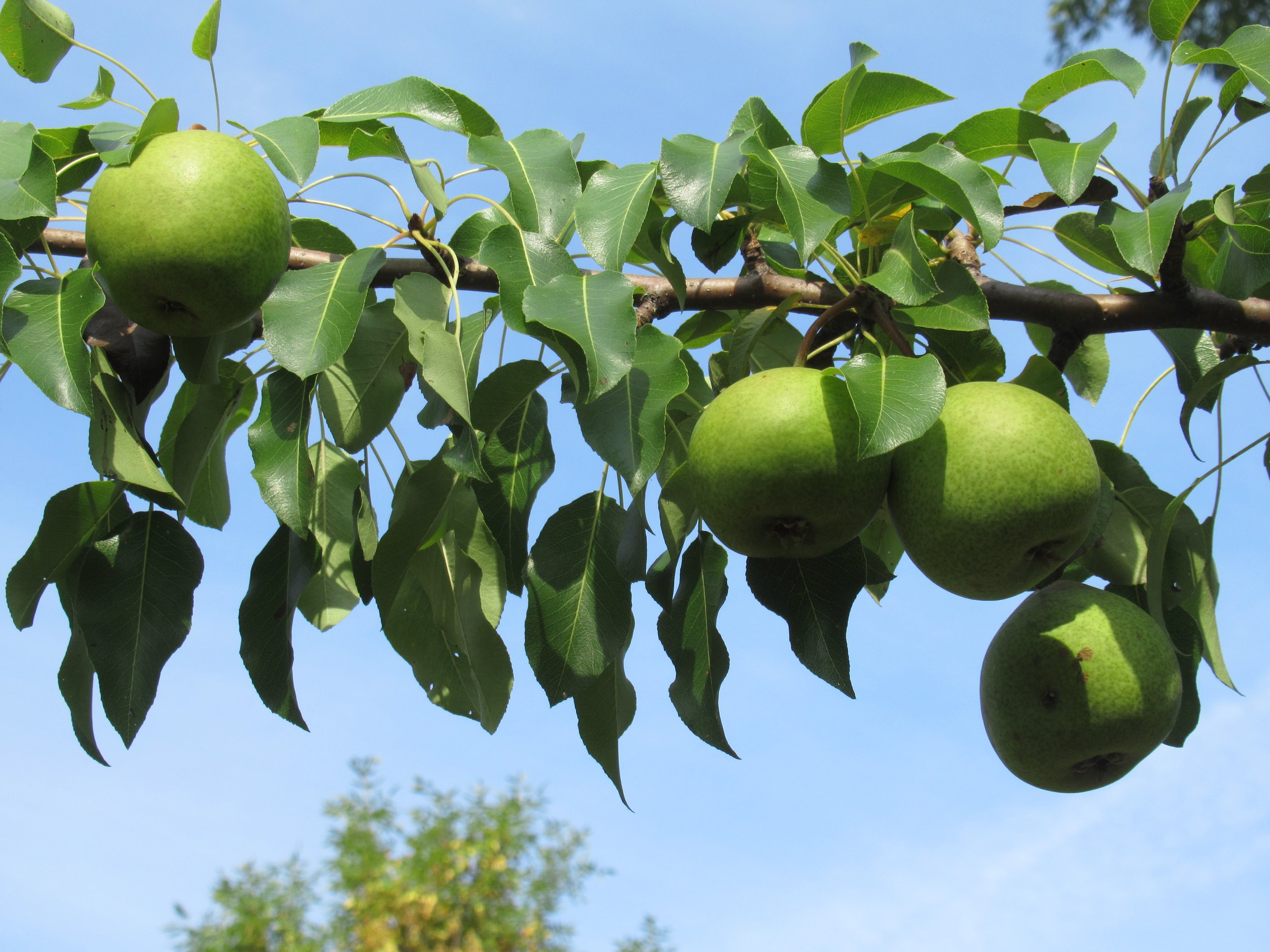
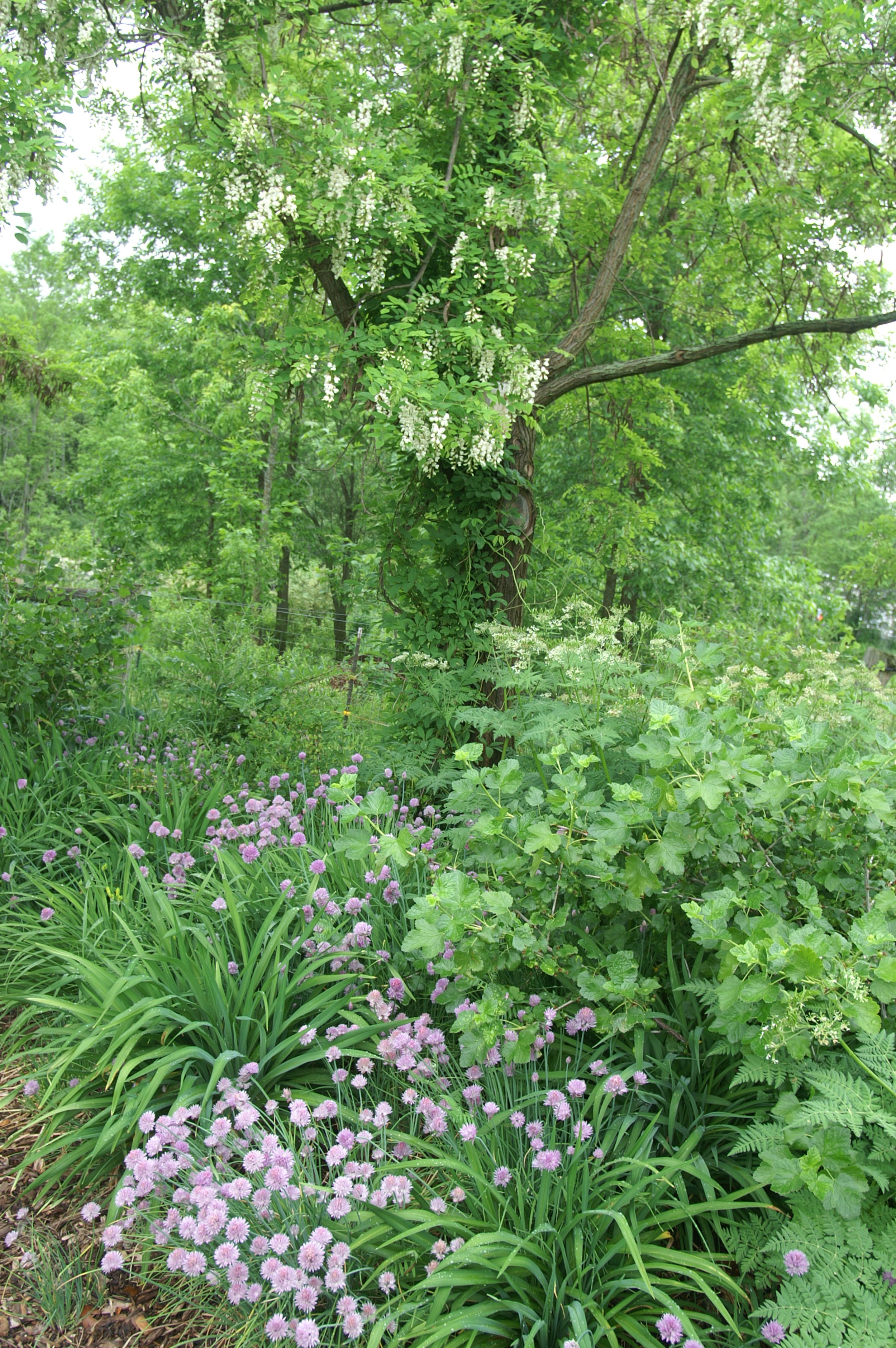
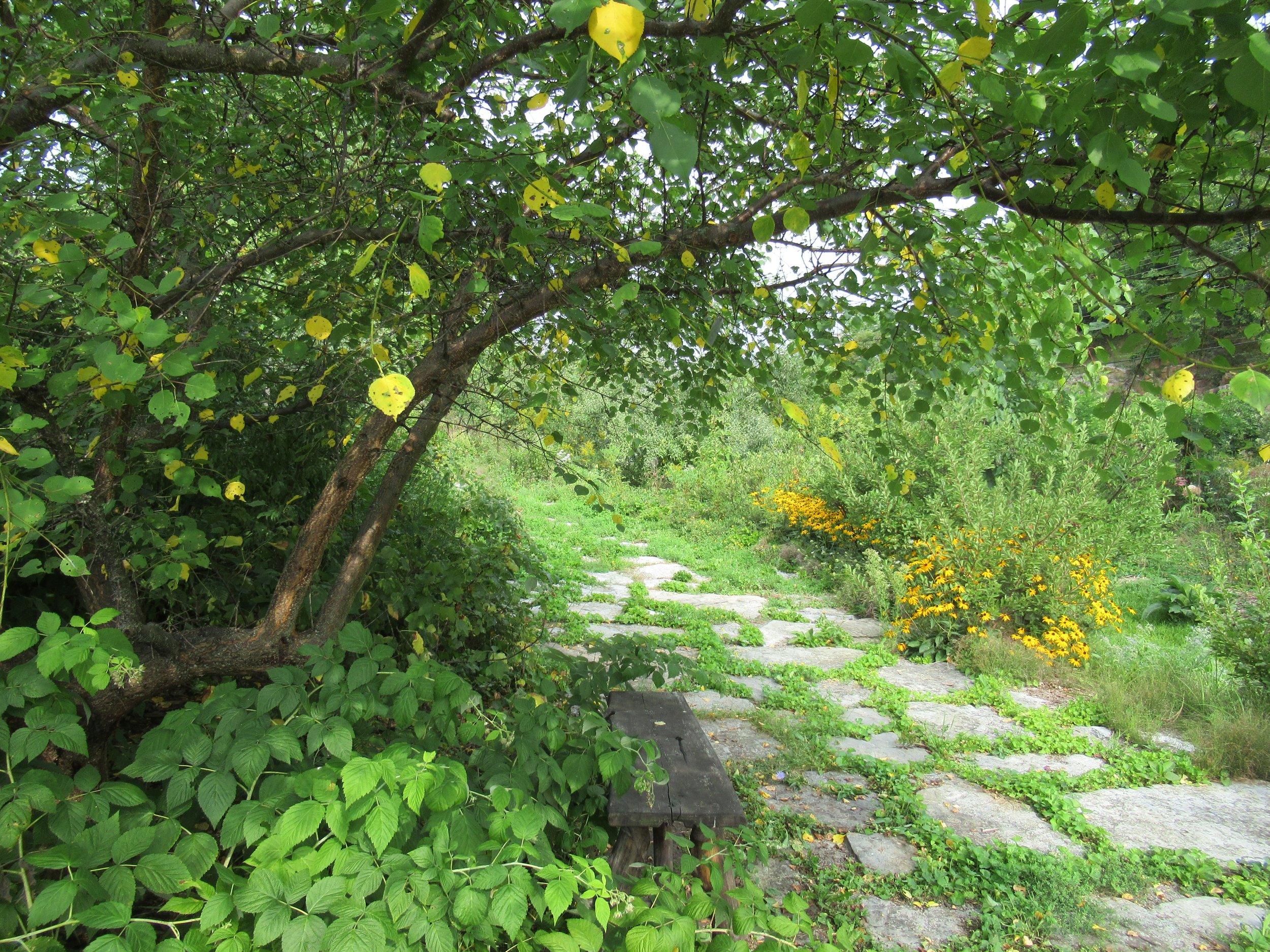


Cold-Hardy Fruit and Nuts, Gardens for Native Pollinators
In this episode: Cold-hardy fruit with Allyson Levy and Scott Serrano and gardening for native pollinators with Sheila Colla and Lorraine Johnson.
Talking about cold-hardy fruits and nuts and native pollinators.
Cold-Hardy Fruit and Nuts
In the first part of the show, we chat with veteran fruit growers Allyson Levy and Scott Serrano, founders of Hortus Arboretum and Botanical Gardens.
Their focus is cold-hardy fruit and nuts with good disease resistance and minimal pest problems — plants suited to home gardens and landscapes.
They tell us about:
Medlar
Mulberry
Himalayan Chocolate Berry
Honeyberry (a.k.a. Haskap)
Hazelnut
Their new book is Cold-Hardy Fruits and Nuts: 50 Easy-to-Grow Plants for the Organic Home Garden or Landscape.
Creating Habitat for Native Pollinators
In the second part of the show we talk about native bees and how we can support them in our gardens, with bumblebee researcher Sheila Colla and native plant expert Lorraine Johnson.
They tell us about:
Gardening as a way to support native bee species
How honeybees can impact native bee populations
The disappearance of the rusty patched bumblebee in Ontario
Their new book is A Garden for the Rusty-Patched Bumblebee: Creating Habitat for Native Pollinators.
Food, Flowers, and Fun for Urban Gardens
Growing food and beauty in the city with Kathy Jentz and Teri Speight.
Urban gardeners Teri Speight and Kathy Jentz talk about creating gardens that are functional, productive, and beautiful.
Today we hang out with 2 urban gardeners who brainstormed 101 ways we can grow food and beauty in urban gardens.
Teri Speight and Kathy Jentz talk about creative ways that city dwellers can make productive, functional, and beautiful gardens.
Jentz is a journalist, editor, and frequent radio and TV guest. She is also the editor and publisher of Washington Gardener magazine.
Speight is a speaker, writer, and podcaster. She’s the former head gardener of the City of Fredericksburg, founding farmer of a CSA, and an estate gardener.
Grow in Containers
Deeper window boxes
Planting pockets
Succulents in a frame
Grow bags
Berries in containers
Make Gardens Fun and Beautiful
Fragrance freeway
Patchwork pavers
Make small spaces feel big through design
New Book: The Urban Garden
Jentz and Speight are authors of the new book, The Urban Garden: 101 Ways to Grow Food and Beauty in the City.
From Ornamental Landscapes to Pretty Tasty Gardens
Lindsay Stuijfzand from Pretty Tasty Gardens talks about how she weaves her passion for growing food into her work as a landscaper.
Lindsay Stuijfzand from Pretty Tasty Gardens talks about how she weaves her passion for growing food into her work as a landscaper.
Edible Landscapes
Lindsay Stuijfzand talks about how she weaves her passion for growing food into her work as a landscaper.
Pretty Tasty Gardens
Stuijfzand is a horticulturist who runs Pretty Tasty Gardens, an edible-landscape garden company in Toronto.
Roots in Landscaping
When she first got into the industry, she worked in conventional landscaping — with a focus on ornamental plants and hardscaping.
As her interest in edible plants grew, she branched off into edible landscaping. It’s a path that makes her a bit of an outlier—or trailblazer—in the landscape industry.
Incredible Edible: Pamela Warhurst on Making Grey Spaces Green
Pamela Warhurst talks about planting propaganda veg gardens and building community. Warhurst helped found the Incredible Edible Network
Pamela Warhurst from Incredible Edible Network talks about turning grey spaces green by helping people believe in themselves.
From the Ground Up
Pamela Warhurst from the Incredible Edible Network talks about turning grey spaces green by helping people believe in themselves.
The original Incredible Edible project in her hometown started with “propaganda” gardens on public land. It evolved to include edible plants around the community health centre and collaborations with businesses in the community.
Today the Incredible Edible Network includes communities around the world.
“It wasn’t the veg that mattered: It was the fact that a bunch of people had said, ‘We’re going to change things.’”
Top Tips
Warhust says to start by helping peole to help themselves.
Here are her top two tips to get started:
Just get up and do it. Don’t make a long list.
Believe in yourself.
“It’s a movement of people who care about tomorrow as well as today.”
Warhurst’s new book is called Seed to Solutions.
Edible Front Yards and Sensory Gardens
Jennifer Lauruol on edible front yards, sensory gardens, and native plants
Regenerative-garden designer Jennifer Lauruol talks about edible front yards, sensory gardens, and native plants.
Jennifer Lauruol weaves together permaculture concepts, native plants, food plants, forest gardening, and educational elements in her regenerative-garden design work in Lancaster, England.
Her passion is edible ornamental gardening—especially in front yards.
Lauruol also uses many native plants in her designs. She finds that effective design helps people interpret the use of native plants as a garden.
Edible Front Yards
Lauruol recalls a neighbour’s concern that children might steal the fruit that Lauruol was growing in her front yard. Yet that was exactly her goal: that children would enjoy the fruit and learn where it comes from.
She says that a well-planned garden can have a succession of edible fruits and ornamental plants. Another way to weave edible plants into a landscape is to create an edible hedge.
While edible front gardens might not appeal to everyone’s taste, Lauruol does have a tip for gardeners worried about sceptical neighbours: “I do know what to do about the diehards: give them strawberries,” she says.
Native Plants
Lauruol explains that having a mown strip around plantings of native plants helps people understand it as something intentional. “If you create a frame around it then people can understand it,” she says.
Her own design with native plants is strongly influenced by Brazilian artist, painter, and landscape architect Roberto Burle Marx, who used big blocks of colour in his work. She says planting native plants in large drifts, as opposed to mixed plantings, is an approach that is less likely to be interpreted as sloppy.
Sensory Gardens
Lauruol creates sensory gardens for people with special needs. Her focus on sensory gardens stems from her own experience with her daughter Marie, who has special needs. “She comes alive when she is in nature,” says Lauruol, adding, “For me, the base of a sensory garden really needs to be a wildlife garden.”
Senses to stimulate with a sensory garden:
Sound. The sense of sound is often overlooked in garden design..
Sight. Lauruol likes to make colourful planting in the shape of a rainbow so visitors get a very strong sense of each colour
Taste.
Smell. “Different kinds of scent are like an orchestra,” says Lauruol. She says to remember scents other than floral scents, such as compost with its woody notes.
Touch.
Foodscaping
Jeremy Cooper talks about foodscaping
Jeremy Cooper from Cooper’s Foodscaping talks about his path into foodscaping and shares his top tips.
Today on the podcast we talk about “foodscaping,” gardening that combines the ornamental with the edible, also known as edible landscaping.
Foodscaper Jeremy Cooper says he likes to work with plants that have multiple functions, including ornamental, herbal, medicinal, ecological, and edible.
Cooper worked in a number of jobs before focusing on foodscaping. In hindsight, he sees that he was circling this intersection of food, gardening, and the environmental before he even realized it.
Part of what he does as a foodscaper is to educate clients about smarter ways to garden. For example, many times he’ll find people battling plants that are edible. “That’s food!” he tells them, as he helps them see the plants in another light.
Foodscaping Tips
Cooper’s tips for gardeners interested in foodscaping:
Don’t be afraid to dream about other ways to use a space and think about what you might like in the long term. “Don’t be afraid to dream…it doesn’t have to be a lawn,” he says.
Grow foods you like to eat.
Make sure the soil is healthy, and, if in doubt, dig into the topsoil and then down below the topsoil to see what is there. He points out that in many new subdivisions, gardeners are left with hard-packed soil and gravel beneath a shallow layer of topsoil.
Cooper’s Favourite Food Plants
Serviceberry. Cooper says that while many people grow this as an ornamental plant, a lot of people don’t realize the fruit are edible. He points out that it’s an excellent understory tree that does well in partial sun.
Amaranth. Beautiful, colourful. Edible leaves and grain.
Currants.
Bergamot. Flowers and herbal uses.
Yarrow. Flowers and herbal uses.
Squashes.
Make a Potager Garden
Landscape architect Jennifer Bartley talks about how to make a potager
Landscape architect and author Jennifer Bartley talks about how to make a potager garden.
Today on the podcast we head to Ohio to find out more about potager gardens. Jennifer Bartley tells us about this traditional kitchen garden style from France, and how to create the same sort of food-producing garden with seasonality and a sense of intimacy at home.
Bartley writes, “The potager is more than a kitchen garden; it is a philosophy of living that is dependent on the seasons and the immediacy of the garden.”
Bartley is a landscape architect, whose firm, American Potager, designs gardens inspired by the grand French kitchens.
She is also the author of The Kitchen Gardener’s Handbook and Designing the New Kitchen Garden: An American Potager Handbook.
About Potagers
“Jardin potager” is French for kitchen garden. The traditional potager garden is a seasonal kitchen garden with vegetables, fruit, herbs, and flowers for cutting. Meals change as crops in the garden change with the seasons.
Bartley explains that there is a long tradition of this style of gardening in France. Potager gardens combine beauty and accessibility, and are often enclosed within walls in view of the residence.
The garden can be a place of restoration and refuge, says Bartley. It can be a destination—somewhere close to the kitchen that feels like it’s own spacial place.
She says that where she grew up, in Ohio, the tradition is to make gardens with rows, not unlike the surrounding agricultural fields. These gardens are often situated in a rarely seen part of a yard. “If you put it in a remote part of your landscape, you don’t go there, you don’t see it, and you don’t maintain it,” says Bartley.
Tips to Make a Potager
Borrow part of an existing wall to help create the sense of enclosure, e.g. part of a building, the back of a garage, or even a hedge
Think of sunlight for sun-loving crops
The potager can be a “tasting garden” with a progression of different crops being ready as the season moves along
Make it in a place you pass by daily
Choose bed dimensions for ease or reaching, e.g. 4 feet wide
Make pathways wide enough for a wheelbarrow, e.g. 3 feet wide
Bartley says that Chateau Villandry in France has gardens that inspire her.

